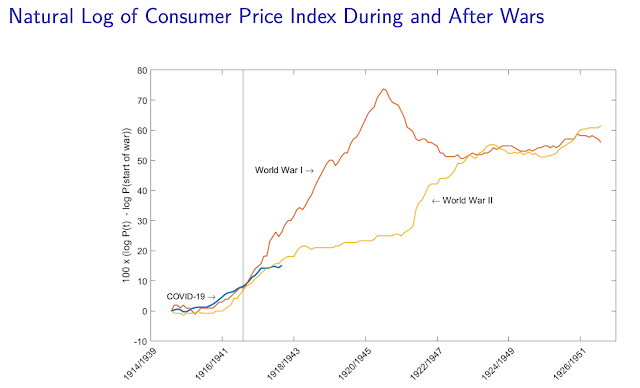Two more thoughts:
1) In the SBV debacle, many of my colleagues and friends jump to the conclusion, we should just mark all assets to market and forget about this "hold to maturity" business.
Not so fast. Like all imperfect patches, there is some logic to it. Suppose you have a $100 payment that you have to make in 10 years. To cover that payment, you buy a $100 face value Treasury zero coupon bond. Done, zero risk.
Now interest rates rise. The value of your asset has fallen in value! It's only worth, say, $90! Are you underwater? No, because when the time comes, you still will have exactly $100 to make the needed payment.
You will quickly answer, well, mark both assets and liabilities to market. The $100 payment is now also worth $90, so marking both sides to market would reveal no change. But there is a lot of unneeded volatility here. And in most cases, the $100 payment is not tradeable on a market, while the $100 asset is. So now, you're going to be balancing marking to market vs. marking to model. Add the regulator's and many participant's distrust of market prices, which are always seemingly "illiquid," "distressed," in a state of "fire sale," "dysfunctional," and so forth. Add the pointlessness of it all. In this situation we all know that you can make the payment in 10 years. Lock it up and ignore it. Call the asset "hold to maturity."
Of course, suppose the point of that asset is to make sure that depositors with $100 accounts can always get their money back by selling the asset. Well, now we have Silicon Valley Bank.
Hence the imperfect fudge of current accounting and regulation rules. "Hold to maturity" assets don't get marked to market, and indeed there are penalties for selling them to meet current needs. Lots of "liquidity" and other rules are supposed to make sure there are adequate short run liabilities to stop a run. Those were of course completely absent in SBV's case -- a truly spectacular failure of elementary regulation.
In short, mark to market makes sense to assess if a bank can make its payments and avoid failure tomorrow. Hold to maturity makes a bit of sense to assess if a bank can make its payments and avoid failure years from now, when both long term assets and long term liabilities come due. That is, if it survives that long.
2) There is a lot of criticism of SBV bank management and board for being underinvested in risk management and over invested in lobbying, political connections, donations to politically popular causes, and so forth. Ex post, their choice of managerial investments looks brilliant! What brought in the millions to stem a run, I ask you? In today's highly political banking system, they made optimal choices. To an economist, many puzzling actions are just an optimal answer to a different question.
Update: Ok, I went too far with that one. Management are out, shareholders wiped out. I'll stick with the idea that uninsured depositors did a great job of monitoring -- they monitored that the bank had the political chops to demand and get a bailout of uninsured depositors!
From a correspondent:
"It seems to me now that SVB was really a money market fund with the addition of a bit of equity and breaking all the SEC asset and liquidity rules that MMFs are subject to. "
Or, it was really a mutual fund (money market funds with $1 values can't invest in long term bonds, long term bond funds must have floating NAV) that was violating rules on floating NAV!


